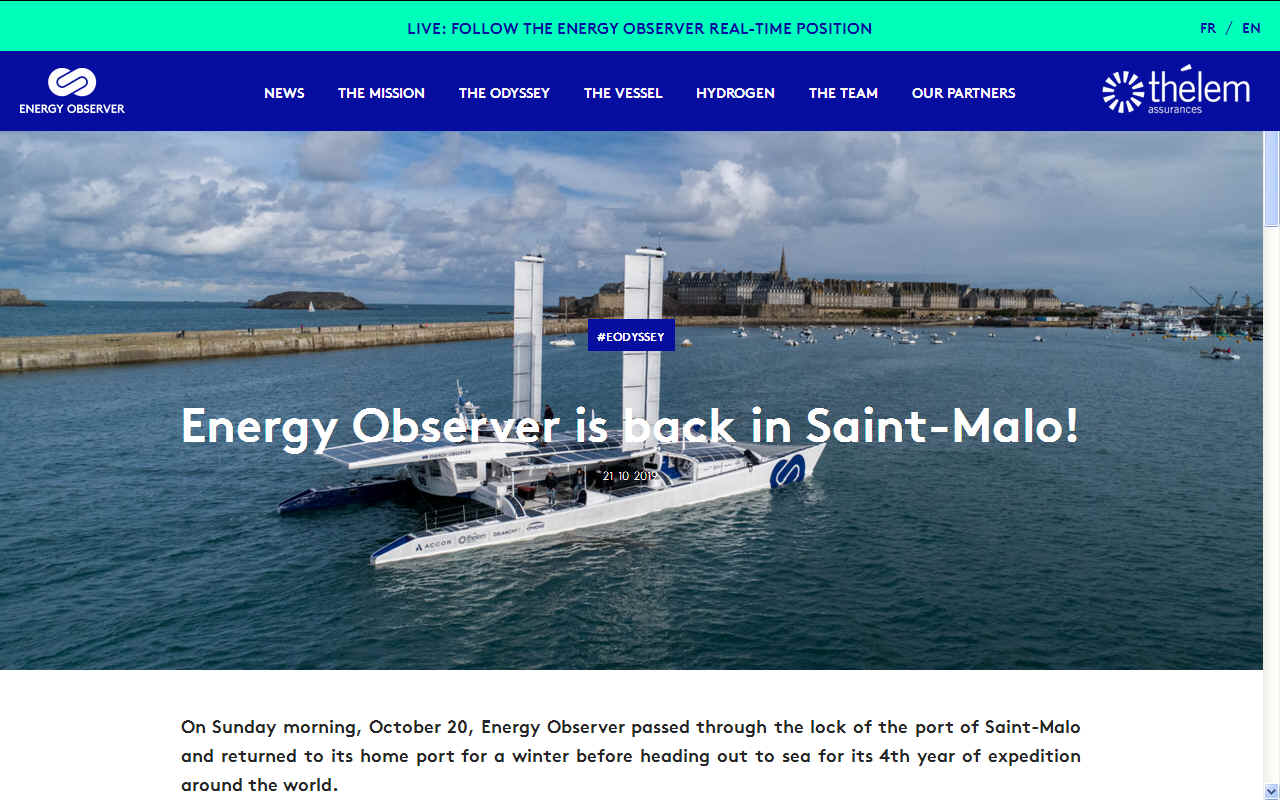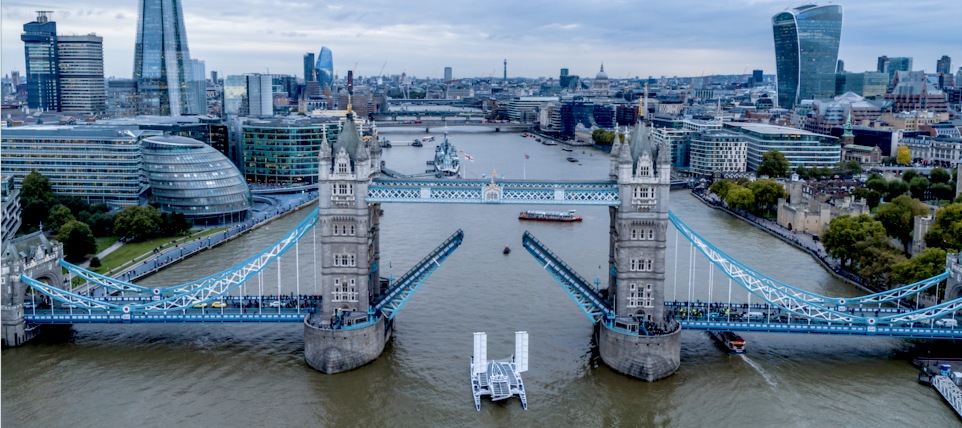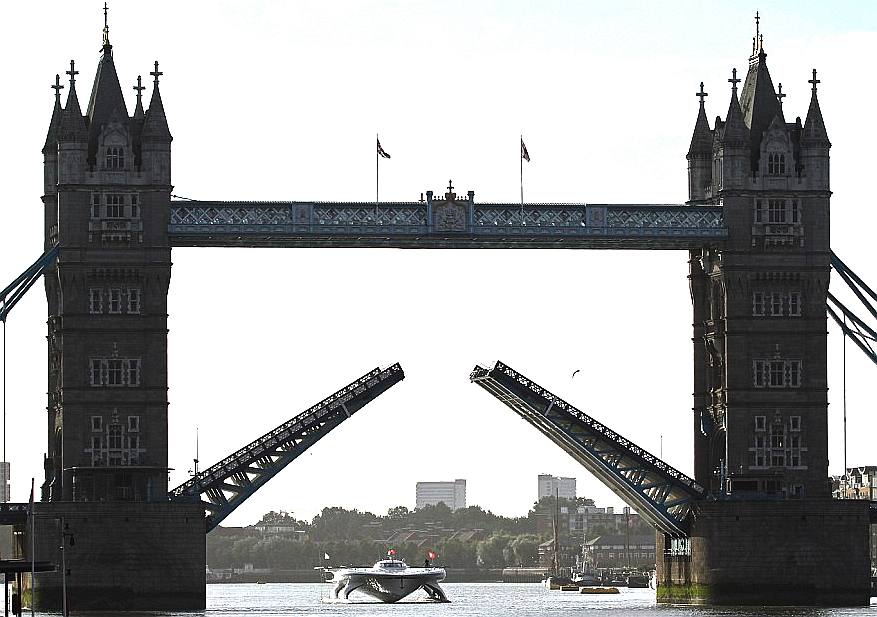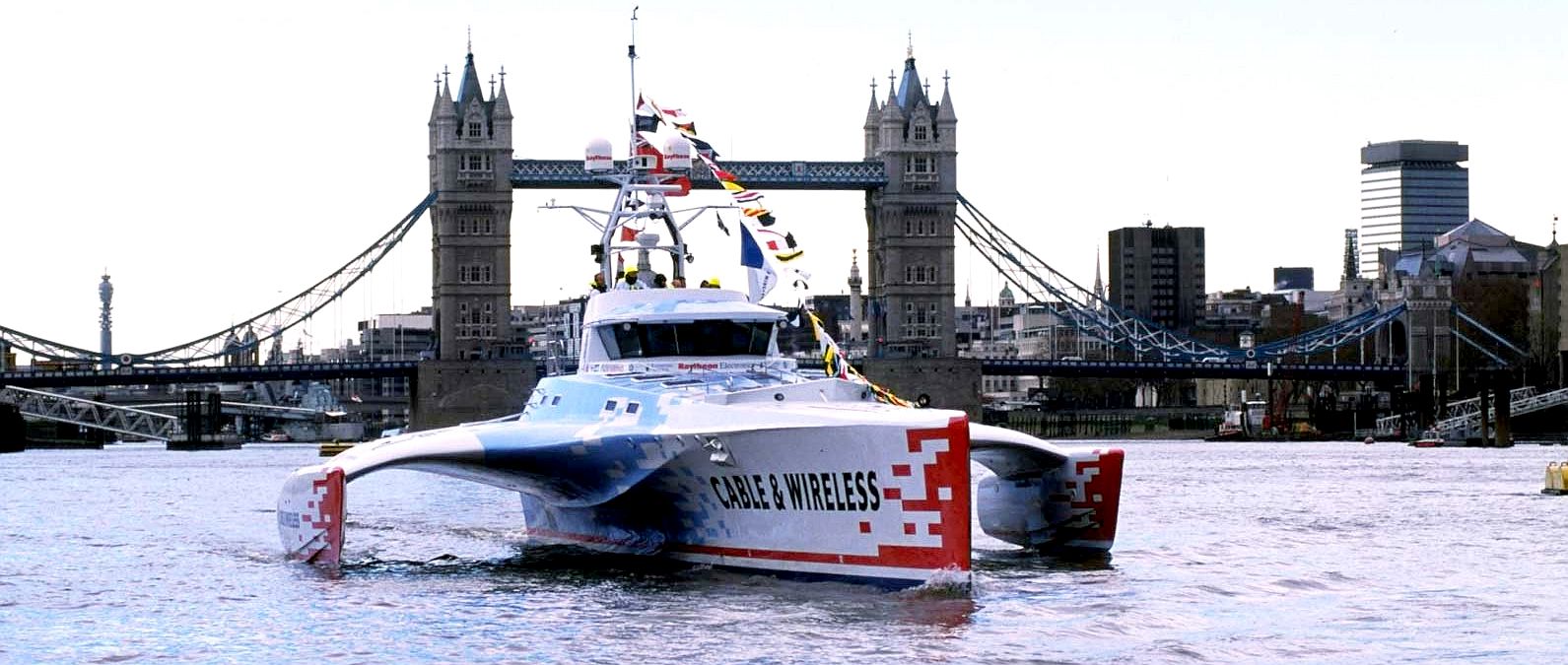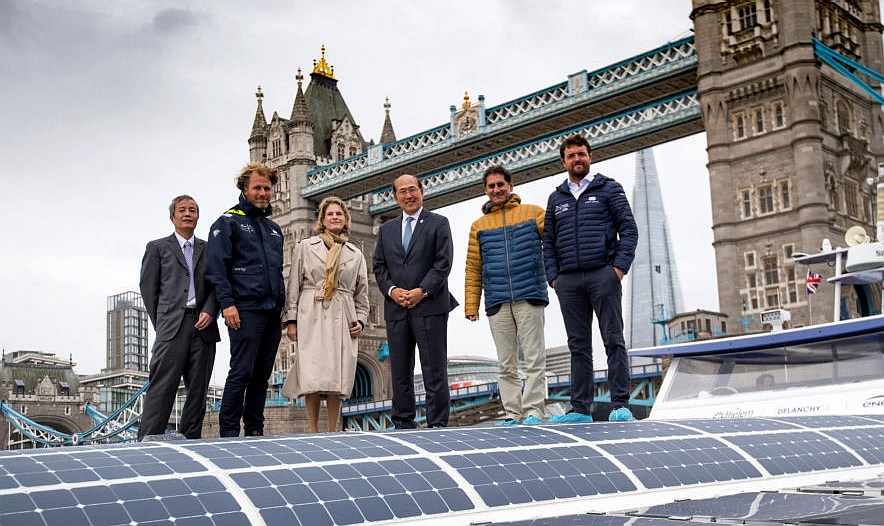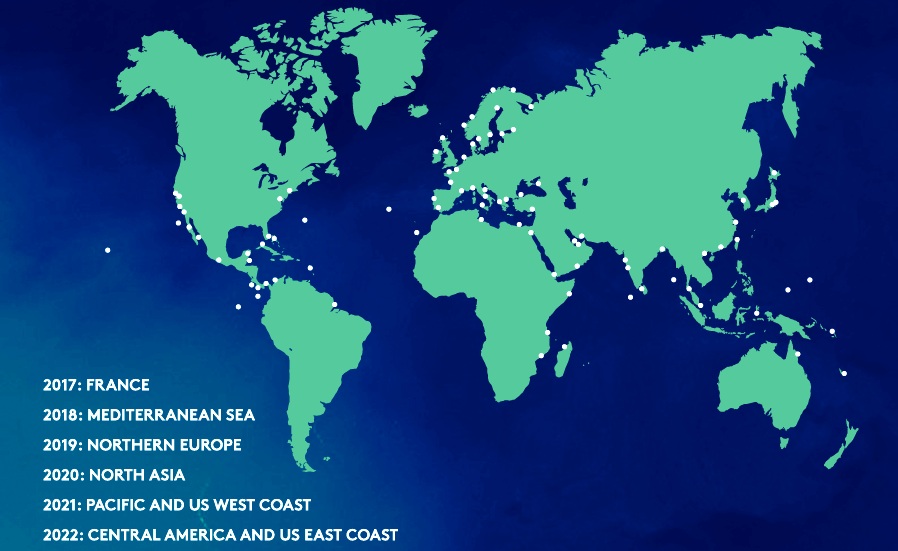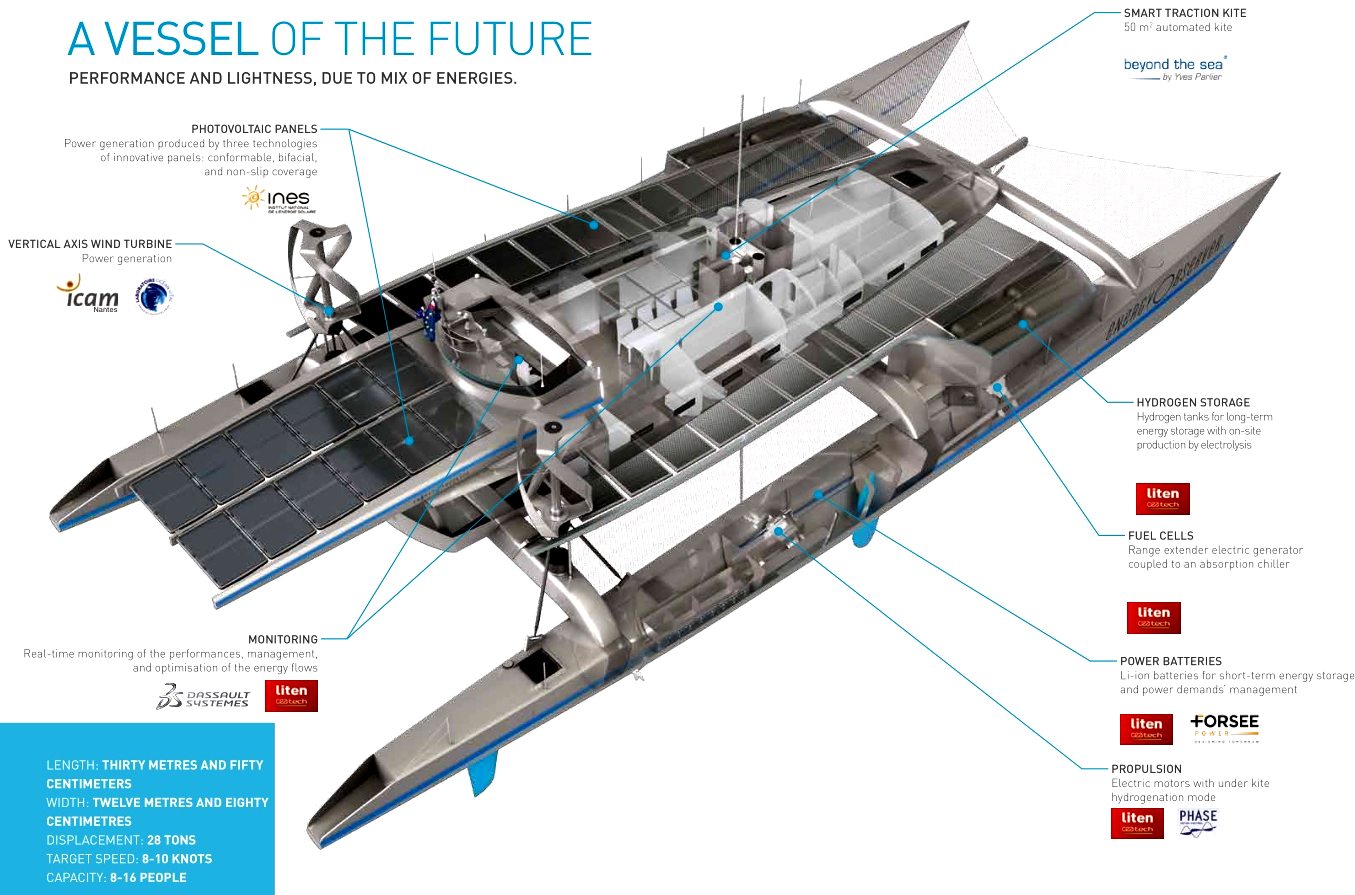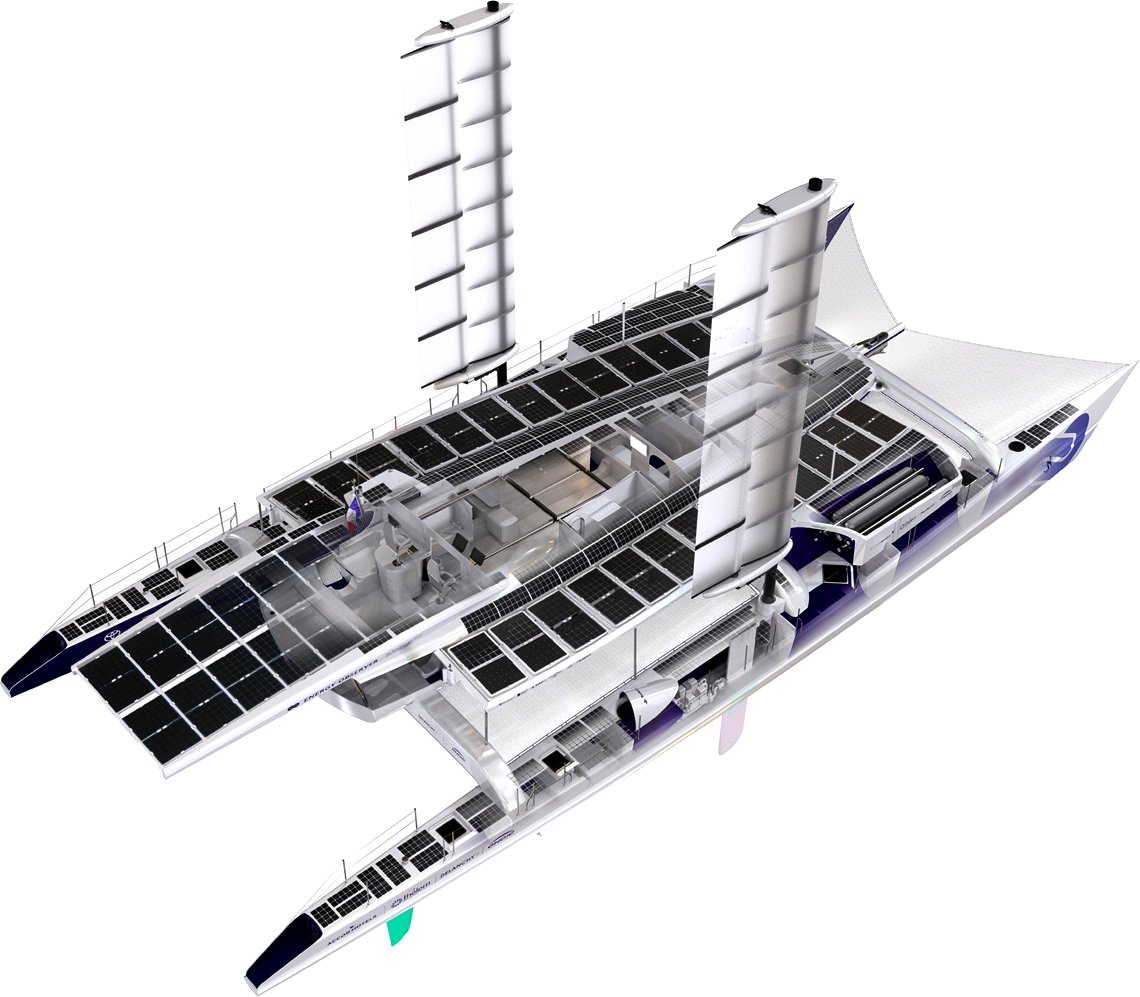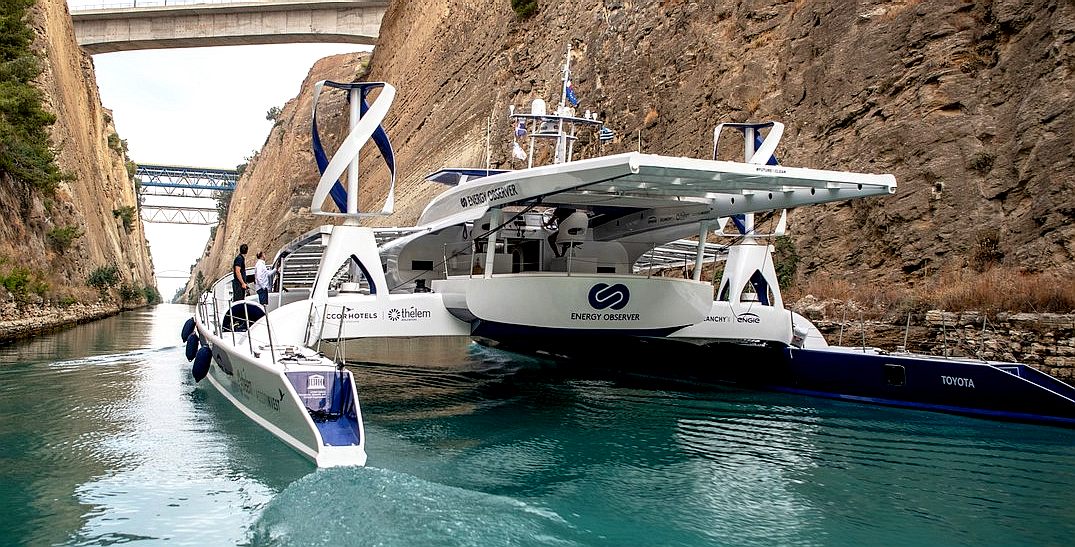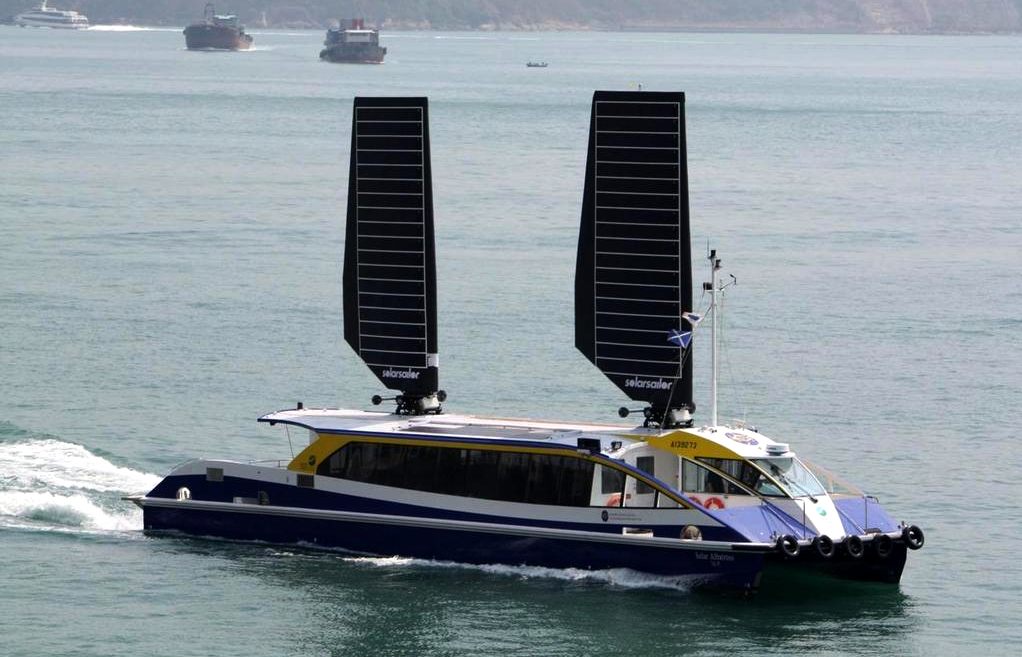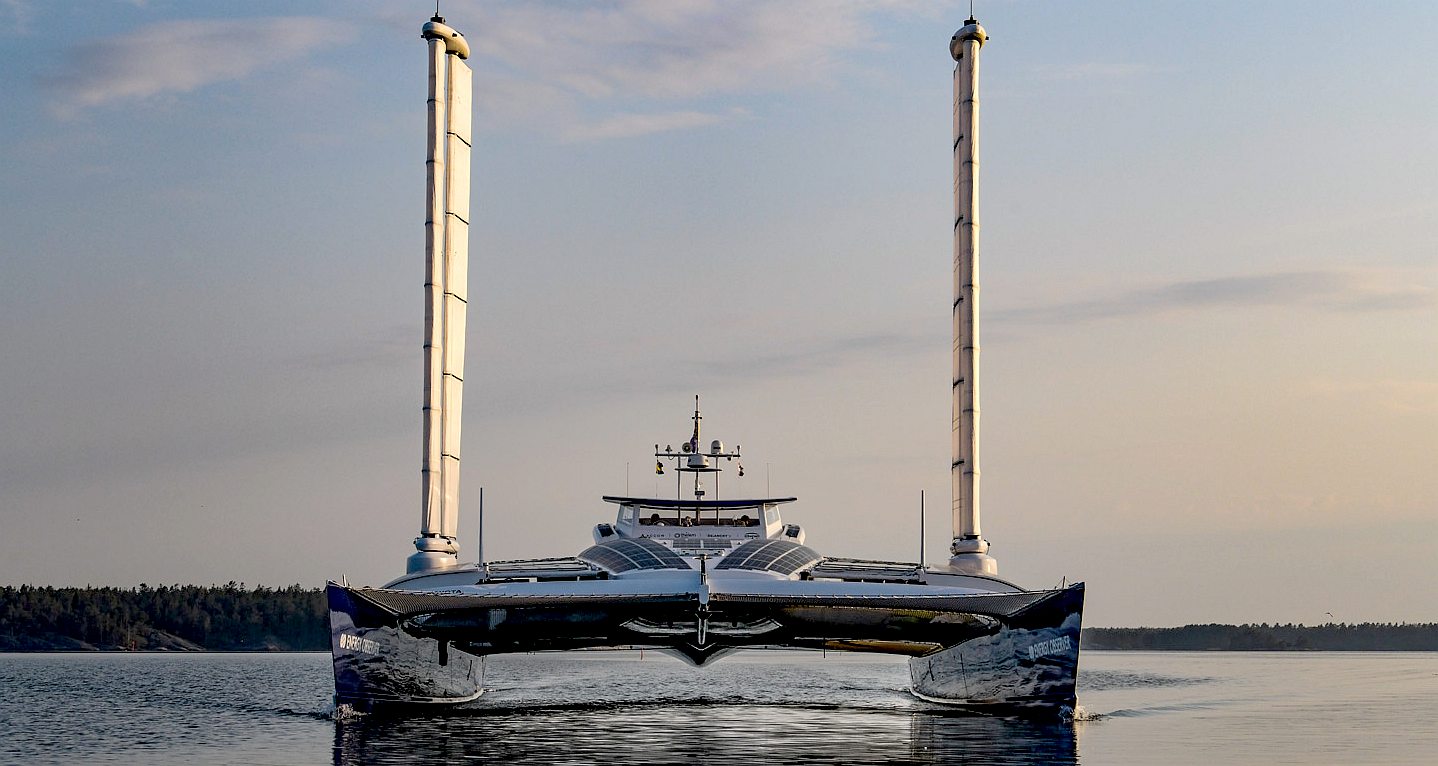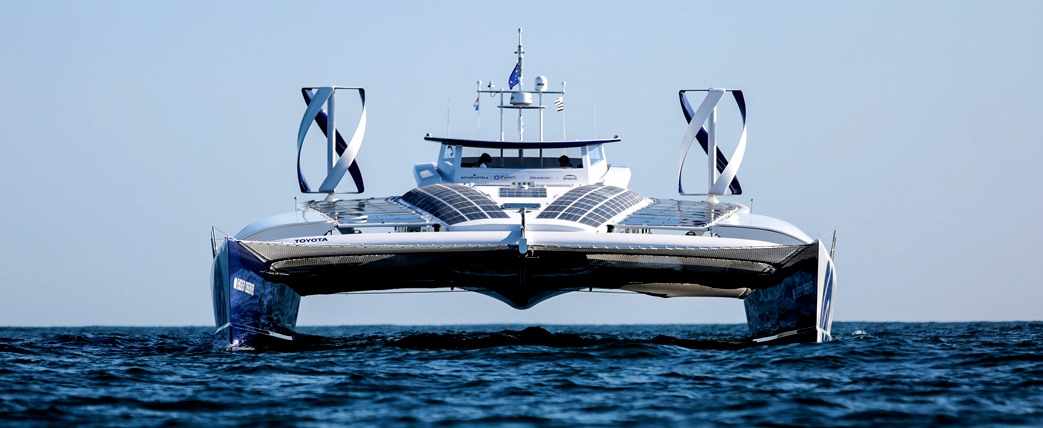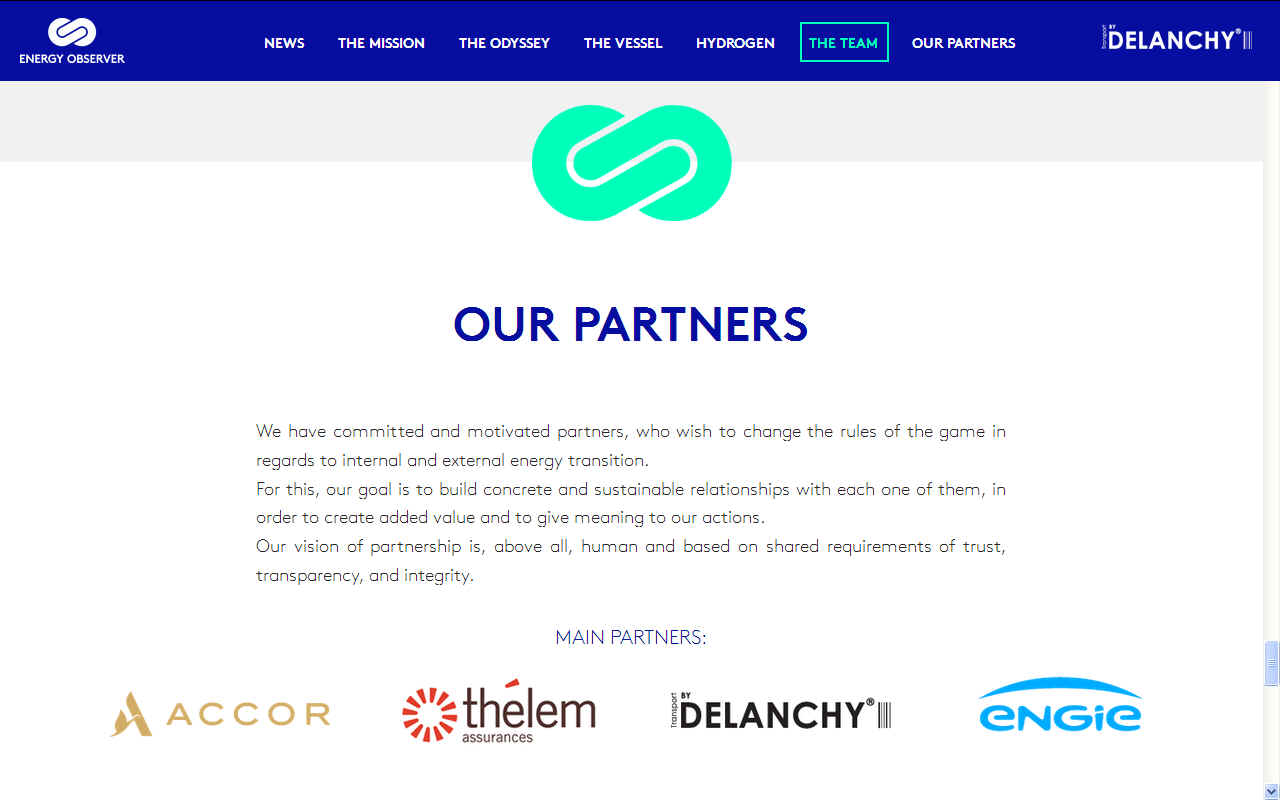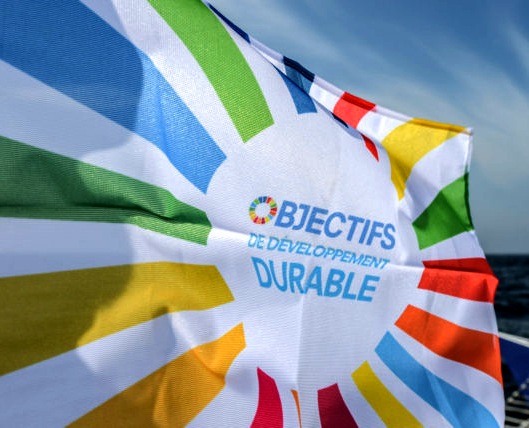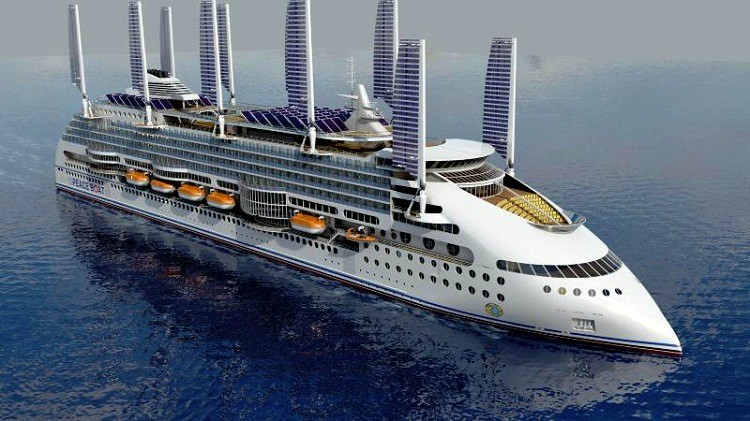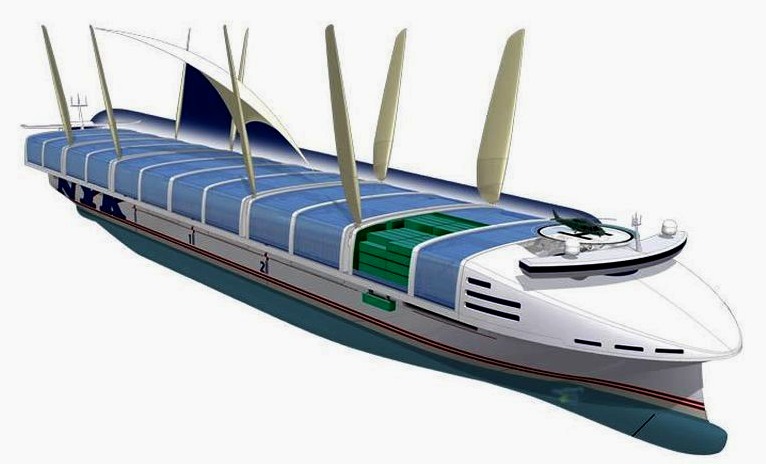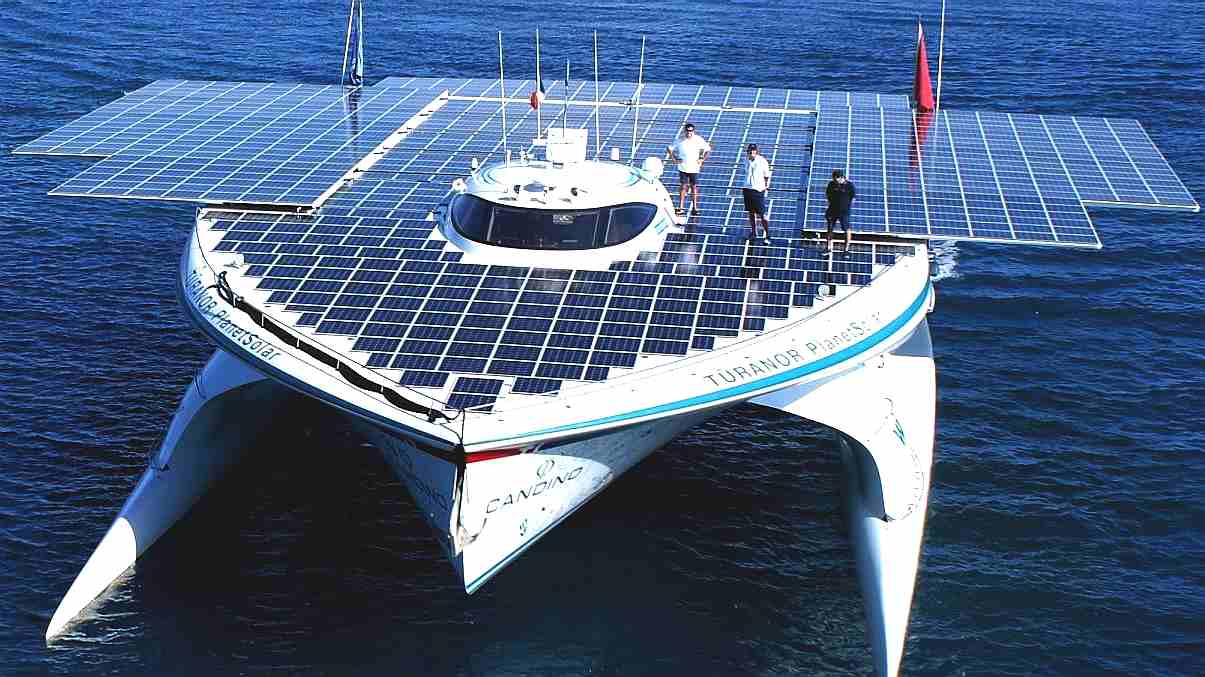|
ENERGY OBSERVER
Please use our A-Z INDEX to navigate this site where page links may lead to other sites
|
|
|
OCTOBER 2019
A large part of Energy Observer’s mandate is education, and both the boat and its travelling eco-exhibition will be open to the public while she is moored until October 9 at St. Katharines Docks on the
Thames.
LONDON 2019 - Tower Bridge, the Energy Observer follows in the wake of PlanetSolar in visiting this famous landmark.
PLANETSOLAR - After leaving Oostende (Belgium) on August 30 2013, the largest solar boat in the world reached London a day later, thereby bringing the campaign of scientific measurements along the Gulf Stream (PlanetSolar DeepWater) to a close.
2008 - The Cable & Wireless Adventurer on the River Thames, designed by Nigel Irens
Visited 13 Northern Europe ports
Along the way its arrival was an impetus for each city to show off its own initiatives in terms of energy and environmental transition especially in Antwerp and Amsterdam where the ports are implementing lower carbon tactics and technology in the servicing of the huge ships that dock and unload their cargo.
So how does a 60 metre (200 foot) boat sail around the world with no emissions? Energy Observer uses a mix of solar, wind and
hydro-generation.
Next stop: Africa and Asia
As Energy Observer Expedition Leader Jerome Delafosse says: The concept of using wind and solar power together on ships has been within our grasp for many years, but we did not care to divest ourselves of the diesel oils that shipping lines have been burning tax free since bunker fuels took over from coal.
The Energy Observer may be one of the slowest catamarans to sail the high seas, but the team is persistent and for sure, more than willing to give up on one idea and try another. For that level of scientific investigation the crew and development team must be commended.
NARROW PASSAGE - The Energy Observer with Vertical Axis Wind Turbines (VAWT) dormant.
Before this, in the 1980's several Japanese ships were fitted with rigid sails with the aim of reducing fuel consumption, driven largely by the oil crisis in the 1970's which resulted in oil shortages and the price of oil soaring. When the crisis passed and oil prices fell again, the viability of rigid sails in terms of cost was undermined.
SUSTAINABLE CONTAINER SHIPS - This is a conceptual design for a container transport for 6 standard units. The concept may be doubled and quadrupled without too much trouble and up-scaled by a factor of 8 to carry 960 standard containers. See our top ten list. That is does not match the carrying capacity of the heavy bunker fueled giants, but it is a formula for eventual 100% zero carbon transportation that is theoretically workable and deliverable to help line operators meet the IMO's targets. Using hydrogen, vessels like this may have ranges of 3,500nm on pressurised gas and virtually unlimited range on liquid hydrogen, once the infrastructure is in place in support of such sustainable clean air objectives.
Instead of folding sails, this system uses solar arrays that track the sun independently of the wind. By using rotary sails/turbines, the harvesting area can be significantly increased over the SolarSailor system. We believe that such a concept could eventually replace bunker fuels and eliminate the need for liquid fuels that may be potentially hazardous, the most dangerous of which is liquid hydrogen. LNG offers some respite until 2030. A system based on the components shown here might be tacked onto existing ships to assist propulsion and lower fuel consumption - as an interim measure during the transition to sustainable shipping.
FERRY SERVICE - The Solar Sailor also used sails when operating in Sydney and Hong Kong carrying 100 passengers each.
CHANGE OF TECHNOLOGY - Where the deck mounted vertical axis wind turbines did not perform as well as expected, the team opted to try extendable furling sails that rise to become semi-rigid wings. Wind turbines systems that raise the generators higher up into the air stream to improve energy harvesting are a feature of a bid for European funding in 2020.
contact@energy-observer.org
A - Z SAIL AND SOLAR ASSISTED BOATS & SHIPS
LINKS & REFERENCES
https://plugboats.com/zero-emission-energy-observer-lands-in-london/ http://www.energy-observer.org/actu/en/
TRANSFERABLE TECHNOLOGY - The design of the Climate Change Challenger might be adapted to Cargo, Container, Cruise and Ferry designs, without needing to radically alter port facilities. The designs above are not representative of adaptations of the concept, but serve to illustrate the thinking of other design houses. The Challenger project also involves hydrogen and LH2 as part of the Work Packages to develop, including hydrogen bunkering, which is virtually non-existent in 2021.
Please use our A-Z INDEX to navigate this site
AEGEAN - ADRIATIC SEA - ARCTIC OCEAN - ATLANTIC OCEAN - BALTIC SEA - BAY OF BENGAL - BERING SEA - CARIBBEAN SEA - CORAL SEA EAST CHINA SEA - ENGLISH CHANNEL - GULF OF GUINEA - GULF OF MEXICO - INDIAN OCEAN - IONIAN - IRISH SEA - MEDITERRANEAN SEA NORTH SEA - PACIFIC OCEAN - PERSIAN GULF - SEA OF JAPAN - SOUTH CHINA SEA - SOUTHERN OCEAN - TYRRHENIAN
|
|
|
This website is provided on a free basis as a public information service. copyright © Climate Change Trust 2021. Solar Studios, BN271RF, United Kingdom.
|
